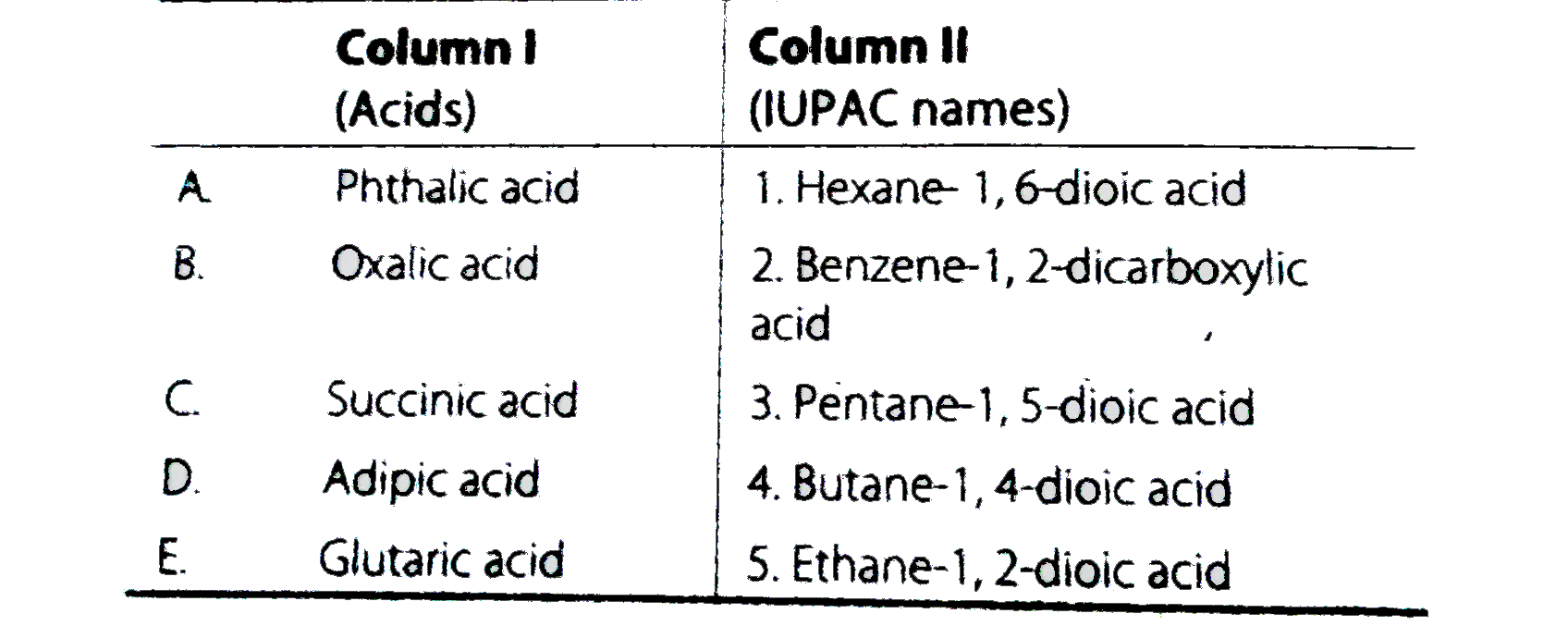Match the scientists and their contributions in the field of evolution
(i) Charles Darwin (1) Mutation theory (ii) Lamarck (2)Germ plasm theory(iii) Hugo De Vries(3) Philosophic Zoologique(iv) Ernst Haeckel(4) The Origin of species(v) August Weismann(5) Biogenetic law(6) Essay on population
(i)−(4),(ii)−(3),(iii)−(1),(iv)−(5),(v)−(2)
(i)−(4),(ii)−(3),(iii)−(5),(iv)−(1),(v)−(6)
(i)−(2),(ii),(iii)−(1),(iv)−(5),(v)−(2)
(i)−(3),(ii)−(4),(iii)−(1),(iv)−(5),(v)−(2)
The correct Answer is:A
To match the scientists with their contributions in the field of evolution, we can follow these steps:
1. Identify Contributions of Charles Darwin:
- Charles Darwin is known for his book "The Origin of Species", where he discusses natural selection and adaptation.
- Match: (i) Charles Darwin → (4) The Origin of Species
2. Identify Contributions of Lamarck:
- Lamarck is known for his work "Philosophic Zoologique", where he proposed the theory of inheritance of acquired characteristics.
- Match: (ii) Lamarck → (3) Philosophic Zoologique
3. Identify Contributions of Hugo De Vries:
- Hugo De Vries is known for the "Mutation Theory", which he presented after his experiments on the evening primrose (Enothera lamarckiana).
- Match: (iii) Hugo De Vries → (1) Mutation theory
4. Identify Contributions of Ernst Haeckel:
- Ernst Haeckel is known for the "Biogenetic law", which states that ontogeny (development of the embryo) recapitulates phylogeny (evolutionary history).
- Match: (iv) Ernst Haeckel → (5) Biogenetic law
5. Identify Contributions of August Weismann:
- August Weismann is known for the "Germ plasm theory", which states that inheritance occurs through germ cells and not somatic cells.
- Match: (v) August Weismann → (2) Germ plasm theory
Final Matches:
- (i) Charles Darwin → (4) The Origin of Species
- (ii) Lamarck → (3) Philosophic Zoologique
- (iii) Hugo De Vries → (1) Mutation theory
- (iv) Ernst Haeckel → (5) Biogenetic law
- (v) August Weismann → (2) Germ plasm theory
Summary of Matches:
- (i) 4
- (ii) 3
- (iii) 1
- (iv) 5
- (v) 2
- Charles Darwin is known for his book "The Origin of Species", where he discusses natural selection and adaptation.
- Match: (i) Charles Darwin → (4) The Origin of Species
- Lamarck is known for his work "Philosophic Zoologique", where he proposed the theory of inheritance of acquired characteristics.
- Match: (ii) Lamarck → (3) Philosophic Zoologique
- Hugo De Vries is known for the "Mutation Theory", which he presented after his experiments on the evening primrose (Enothera lamarckiana).
- Match: (iii) Hugo De Vries → (1) Mutation theory
- Ernst Haeckel is known for the "Biogenetic law", which states that ontogeny (development of the embryo) recapitulates phylogeny (evolutionary history).
- Match: (iv) Ernst Haeckel → (5) Biogenetic law
- August Weismann is known for the "Germ plasm theory", which states that inheritance occurs through germ cells and not somatic cells.
- Match: (v) August Weismann → (2) Germ plasm theory
- (i) Charles Darwin → (4) The Origin of Species
- (ii) Lamarck → (3) Philosophic Zoologique
- (iii) Hugo De Vries → (1) Mutation theory
- (iv) Ernst Haeckel → (5) Biogenetic law
- (v) August Weismann → (2) Germ plasm theory
- (i) 4
- (ii) 3
- (iii) 1
- (iv) 5
- (v) 2
Similar Questions
Match the terms given in column I with those given in column II :
Column IColumn II(i)Fossil(a)A famous evolutionist(ii)A theory of evolution(b)Survival of the fittest(iii)Probable ancestor of birds(c)Petrified remains of prehistoric life(iv)Charles Darwin(d)Father of genetics(v)Gregor Mendel (e)ArchaeopteryxView SolutionA die thrown 500 times and the outcomes are noted as given below :

If a die is thrown at random , find the probability of getting
(i)1(ii)2(iii)3(iv)4(v)5(vi)6.View Solution
Knowledge Check
- Question 1 - Select One
Match the following and choose the correct combination from the options given
Column IColumn IIRobert Hooke1.Mutation theroyCharles Darwin2.Swan-necked flask experimentHugo de vries 3.Origin of speciesLouis pasteus4.McrographiaAA-3,B-4,C-1,D-2BA-2,B-1,C-3,D-4CA-1, B-2, C-3, D-4DA-4, B-3, C-1,D-2 - Question 2 - Select One
Match the following columns and find correct combination:
Column IColumn IIa Darwinp Mutation theoryb De Vriesq Protobiosisc Pasteurr Origin of speciesd Foxs Special Creationt Swan-Necked Flask ExperimentAd = r, b, = p, c = t, J = qBa = p, b = q, c = r, d = sCa = t, b = r, c = q, d = pDa = r, b = t, c = p, d = q - Question 3 - Select One
Select the correct option:
(A) Malthus (i) Finches
(B) Darwin (ii) Biston
(C ) Industrial melanism (iii) Mutation theory
(D) de Vries (iv) Essays on populationA(A) (ii) (B) (i) (C ) (iii) (D) (iv)B(A) (i) (B) (iii) (C ) (iv) (D) (ii)C(A) (iv) (B) (ii) (C ) (iii) (D) (i)D(A) (iv) (B) (i) (C ) (ii) (D) (iii)
Represent each of the following rational numbers on the number line.:
(i) 57 (ii) 83 (iii) −236 (iv) 1.3 (v) −2.4View SolutionMatch species given in Column I with the electronic configuration given in Column II.
Column IColumn II(a)cr(i)[Ar]3d84s0(b)Fe2+(ii)[Ar]3d104s1(c)Ni2+(iii)[Ar]3d64s0(d)Cu(iv)[Ar]3d54s1(v)[Ar]3d64s2View SolutionMatch the organism with its related contribution in the field of biotechnology.
Column-IColumn-II1Escherichia coliI1strDNA2Agrobacterium tumefaciensIIpBR3223Thermus aquaticusIIITi plasmid4Salmonella typhimuriumIVPolymerase used in PCRView SolutionMatch the columns and find the correct option
IIIIII(1)Ctenophora(a)Ancylostoma(i)Bioluminescence(2)Plathyhelminthes(b)Pleurobrachia(ii)Acoelomate(3)Cyclostomata(c)Planaria(iii)Migration(4)Aschelminthes(d)Ophiura(iv)Coelomata(5)Echinodermata(e)Hog fishes(v)EndoparasiteView SolutionMatch the acids given in Column I with their correct IUPAC names given in Column II.
 View Solution
View Solution

